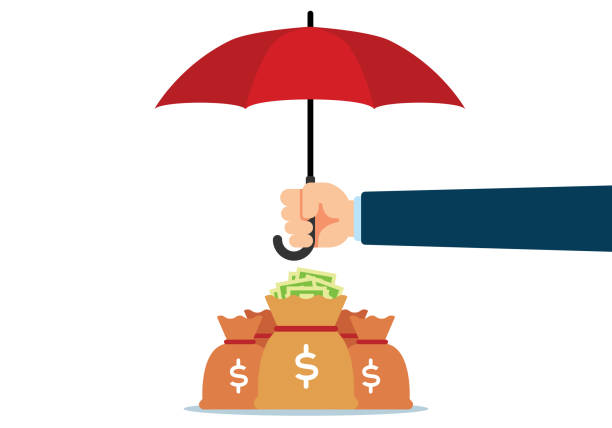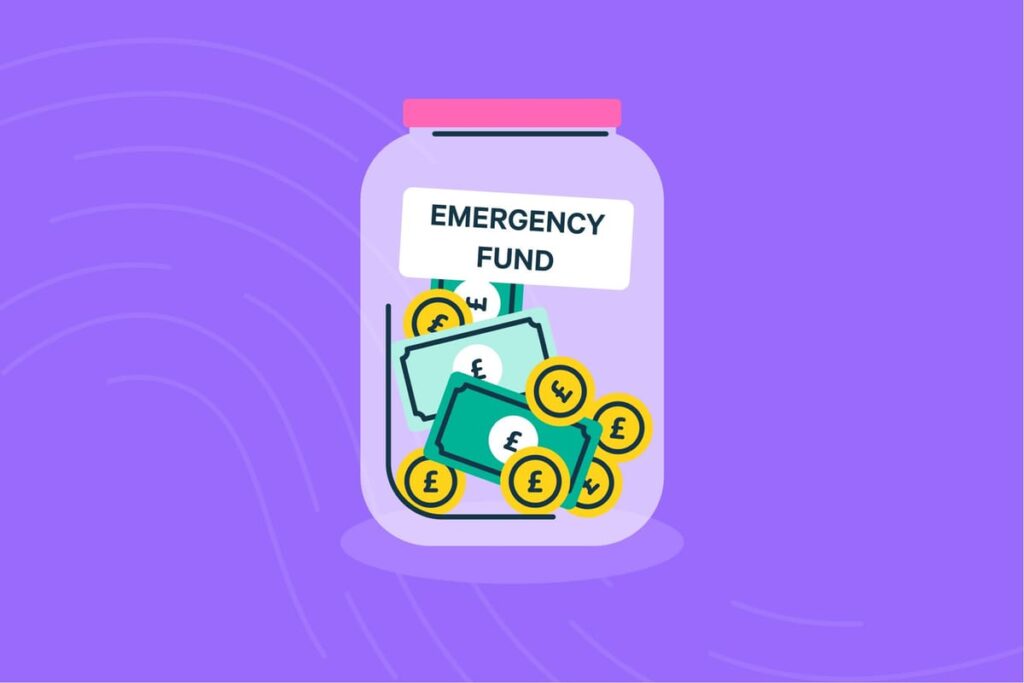In the labyrinth of personal finance, two terms frequently surface: the Emergency Fund and the Savings Account. To the untrained eye, they appear interchangeable—both are pools of readily available cash. However, mistaking one for the other is a common financial misstep that can jeopardize long-term stability and growth. While an emergency fund is almost always housed within a savings account (or a similar high-liquidity vehicle), their fundamental purpose, structure, and usage rules are distinctly different.
Understanding this crucial distinction is the first, non-negotiable step toward building a resilient financial foundation, a step that helps you stay on track for both immediate surprises and future goals.
I. Defining the Core Concepts
The key to financial mastery lies in giving every dollar a job. The difference between an emergency fund and a savings account is best explained through the job each is assigned.
A. The Emergency Fund: Your Financial Safety Net
An emergency fund is a dedicated cash reserve explicitly created to cover unexpected, unavoidable, and urgent financial shocks. Think of it as a personal insurance policy against life’s unpredictable curveballs.
Key Characteristics:
- Purpose: To prevent a crisis from derailing your finances. It’s a defense mechanism against debt.
- The “Why”: Major financial disruptions like sudden job loss, a significant medical emergency (with high deductibles), critical home repairs (e.g., a burst pipe), or a major car breakdown.
- The “How Much”: Financial experts generally recommend saving the equivalent of three to six months’ worth of essential living expenses. For those with volatile income (e.g., freelancers) or high-risk careers, the recommendation often leans toward nine to twelve months.
- Location: High-Yield Savings Accounts (HYSAs) or Money Market Accounts. Liquidity is paramount; the money must be accessible within 24 to 48 hours without penalty. It should not be in a volatile investment like stocks.
B. The General Savings Account: Your Goals Fund
A general savings account, or often a collection of sinking funds within one, is money set aside for known, planned, or anticipated expenses and goals. This is your offensive financial playbook—the funds you use to pursue your dreams and manage future expenses without incurring debt.
Key Characteristics:
- Purpose: To accumulate funds for specific, foreseen future needs. It’s an acceleration tool for goals.
- The “Why”: Planned purchases or events such as a down payment on a house, a dream vacation, tuition payments, a new car, major holiday shopping, or a planned home renovation.
- The “How Much”: The amount is entirely dependent on the specific goal, its cost, and the timeline you have set to achieve it.
- Location: Can be a standard savings account, an HYSA, or even a low-risk Certificate of Deposit (CD) for goals further in the future.
II. The Critical Differences in Action
The distinction becomes clearest when examining the rules of engagement for each fund.
The Rule of Usage: Unexpected vs. Expected
| Feature | Emergency Fund | General Savings Account |
| Usage Triggers | Financial crisis, job loss, sudden major expense (medical, car, home). | Planned purchases, foreseen goals (vacation, down payment, tuition). |
| The “Need” | URGENT and UNAVOIDABLE—a necessity to maintain stability. | GOAL-ORIENTED—a desire or planned future necessity. |
| Withdrawal Consequence | Zero regret. The fund is fulfilling its exact purpose. | Goal is delayed or potentially cancelled. Can lead to dipping into the Emergency Fund if the goal is necessary. |
Example: Your water heater bursts.
- Correct Usage: Tap the Emergency Fund. This is an unexpected, urgent, and necessary repair to maintain your quality of life.
- Incorrect Usage: Tap the Vacation Savings Account. This delays your vacation goal, forcing you to choose between essential repairs and planned time off.
Example: You see a great deal on a new TV.
- Correct Usage: Tap the General Savings (if you had a “big purchase” sinking fund) or your checking account. This is a planned or discretionary purchase.
- Incorrect Usage: Tap the Emergency Fund. This violates the core principle, leaving you unprotected if your car breaks down the next day. This is the definition of “leaking” your emergency savings.
The Rule of Access: Liquidity and Separation
While both funds must be liquid (easily converted to cash), the management of this liquidity is different.
1. Account Separation: The most crucial tactical advice is to keep these funds in separate accounts, even if they are at the same bank. A digital wall helps create a psychological barrier.
- If your Emergency Fund is in the same account as your “New Car Fund,” you are more likely to rationalize using the whole pool for a non-emergency. Separate accounts enforce the usage rule.
2. Focus of Building: For most individuals starting their journey, the priority should be clear:
- Priority 1: Build a Starter Emergency Fund ($\$500$ to $\$1,000$). This handles the minor shocks—a small car repair, an unexpected co-pay.
- Priority 2: Start Funding Short-Term Goals. Once the starter fund is built, you can begin saving for smaller goals alongside building the main emergency fund.
- Priority 3: Aggressively Build the Full Emergency Fund (3-6 months). This takes precedence over all non-essential savings until the goal is met.
- Priority 4: Aggressively Pursue Major Goals (House down payment, investment contributions).
The safety net must be woven first; only then can you confidently reach for the trapeze of long-term goals.
III. The Benefits of Financial Dualism
Having both funds operational provides a synergistic level of financial security.
1. Protection Against Debt
The primary function of the Emergency Fund is debt avoidance. Without it, an unexpected $\$4,000$ medical bill is almost certainly paid for with a high-interest credit card, a personal loan, or by raiding your retirement savings (which often carries penalties and taxes). The interest and fees on that debt can cost thousands more and delay your financial progress for years. The Emergency Fund makes the bill a setback, not a disaster.
2. Goal Protection
When the two funds are properly separated, an emergency does not cannibalize your dreams. If your air conditioner dies in the summer, you tap the Emergency Fund. Your savings for a down payment remain untouched. This is vital for mental and financial health, as it ensures you keep moving toward your future goals even when life delivers a blow.
3. Peace of Mind and Opportunity
Financial preparation provides a profound sense of psychological well-being. Knowing that you are protected against job loss or illness frees up mental energy. Furthermore, the Emergency Fund can open doors to opportunity. For example, having a six-month reserve might allow you to switch jobs, pursue a lower-paying but more fulfilling career, or take a sabbatical without fear of immediate insolvency.
IV. Strategic Account Placement and Management
While the purpose defines the funds, the account choice determines their effectiveness.
| Account Type | Liquidity | Typical Interest | Best For |
| Traditional Savings | Excellent | Very Low | Short-term small goals, starter emergency fund. |
| High-Yield Savings | Excellent | Higher (Competitive) | The bulk of the Emergency Fund, large General Savings goals (e.g., down payment). |
| Money Market Account (MMA) | Excellent | Varies, often similar to HYSA | Larger Emergency Funds, good for check-writing access if needed. |
| Certificate of Deposit (CD) | Low (Penalty for early withdrawal) | Highest (Fixed) | Very long-term goals (5+ years) where the money will not be needed. NOT for Emergency Funds. |
The Modern Recommendation: For both the Emergency Fund and most General Savings, the High-Yield Savings Account (HYSA) is the optimal vehicle. It offers full FDIC insurance (low risk) and competitive interest rates that help your money grow slightly over time, keeping pace with inflation better than a traditional savings account, all while maintaining excellent liquidity.
Conclusion
The differentiation between an Emergency Fund and a Savings Account is not merely semantic; it is the philosophical core of financial planning. The Emergency Fund is your financial security blanket, a defensive moat that protects you from falling into debt during a crisis. The Savings Account is your launchpad, a strategic reserve dedicated to propelling you toward your future aspirations.
By setting up two distinct pools of money with two distinct purposes, you gain clarity, resilience, and the confidence to manage life’s surprises without sacrificing your dreams. Start by separating your funds today—it’s the single most powerful step you can take toward comprehensive financial wellness.




